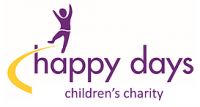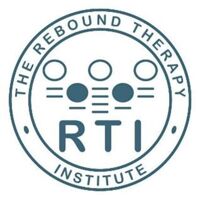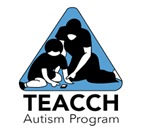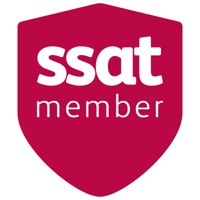Child Protection & Safeguarding and KCSIE
Our Child Protection & Safeguarding Policy
[click link]
Safeguarding Statement
If you have a safeguarding concern, please contact the School on 01472 590645 and request to speak to one of the following members of staff:
- Sarah Cooney (Deputy Headteacher, SEND Experience 3-19), Designated Safeguarding Lead (DSL)
- Richard Gargon (Headteacher), Deputy DSL
- Jackie Saha (Assistant Headteacher, Personalised Learning Solutions 3-19), Deputy DSL
- Kelly Mitchell (Phase Coordinator: Early Years & Primary), Deputy DSL
- Nicola Mackay (Phase Coordinator: Secondary & 16-19), Deputy DSL
- Jess Dawes (Lead Practitioner: Transdisciplinary Impacts), Deputy DSL
- Gemma Rylatt (Business Manager) Deputy DSL
- Sarah Carroll (Senior Admin Officer) Deputy DSL
- Mike Hill is the safeguarding trustee
At Humberston Park School, the health, safety and well-being of every child are our of paramount concern. We listen to our pupils and take seriously what they tell us. Our aim is for children to enjoy their time as pupils in this school. We want to work in partnership with you to help your child achieve their full potential and make a positive contribution.
To promote a safe environment for pupils, our selection and recruitment policy includes all checks on staff and regular volunteers’ suitability, including Criminal Records Bureau checks, as recommended in accordance with current legislation.
In accordance with our responsibilities under section 175/157 of the Education Act 2002, we have a Designated Person for Child Protection who is the Deputy Headteacher, and has received appropriate training for this role. It is their responsibility to ensure that all staff in contact with children receive child protection awareness training on a regular basis.
There are occasions that our concern about a child may mean that we have to consult other agencies. Whilst we would always aim to work in partnership with parents / carers, there may be exceptions to this when concerns are raised for the protection of a child.
On very rare occasions Social Care, whilst undertaking an investigation under Section 47 of the Children Act 1989, may want to speak to a child without parents / carers’ knowledge. This would be a decision made in collaboration with partner agencies and would only be done in situations where a child might be at immediate risk. To gain consent at this point may increase the level of risk to the child or cause evidence of a crime to be lost.
The procedures and policy, which we follow, are based on the Department for Education’s statutory guidance Keeping Children Safe in Education and Working Together to Safeguard Children (2018), and the Governance Handbook. We comply with this guidance and the arrangements agreed and published by our 3 local safeguarding partners.
Please visit our Child Protection & Safeguarding Policy for further information:
http://www.humberstonpark.org.uk/uploads/asset_file/Child-protection-and-safeguarding-2023.pdf
The new version of Keeping Children Safe in Education (KCSIE) is effective from 1 September 2023. There was no consultation period this year as the changes are quite minimal.
Below is a summary of key things you need to know.
Part 1: key things to know
- As part of our safeguarding and online safety training, our staff need to understand their expectations, roles and responsibilities around filtering and monitoring systems (paragraph 14).
This new emphasis is repeated several times in KCSIE 2023
Part 2: key things to know
Filtering and monitoring
- Our Trust Board / Trustees should make sure the designated safeguarding lead (DSL) takes responsibility for understanding the filtering and monitoring systems and processes in place as part of their role (paragraph 103)
- Board should also make sure all staff understand their expectations, roles and responsibilities around filtering and monitoring as part of safeguarding training (paragraph 124)
- Our child protection policy should include how our school approaches filtering and monitoring on school devices and school networks (paragraph 138)
- Our Trust Board should review the DfE’s filtering and monitoring standards. Our board should discuss with our IT staff and service provider what needs to be done to support our school in meeting the standards (paragraph 142)
Other changes include clarification:
- That some children are at greater risk of harm than others, both online and offline (paragraph 170)
- Around how the term ‘children missing education’ is different from ‘children absent from education’. Supporting children who are absent from education helps prevent the risk of them becoming a child missing education in the future (paragraph 175)
Part 3: key things to know
- We should inform shortlisted candidates that we might conduct an online search as part of due diligence checks in the recruitment process (paragraph 221)
- More emphasis on how our school needs to create the right culture so staff feel comfortable discussing safeguarding matters in and outside of work, including online (paragraph 343)
Part 4: key things to know
- There’s a new heading and paragraph which says that if our school receives an allegation relating to an incident where an individual or organisation was using our school premises for running an activity for children, we should follow our safeguarding policies and procedures and inform the local authority designated officer (LADO), as we would with any safeguarding allegation (paragraph 377)
Part 5: key things to know
- Some of the language has changed to reflect the most recent behaviour guidance:
- Paragraphs 542 and 544 now say that teachers can sanction pupils whose conduct falls below the standard which could be reasonably expected of them
- The heading above paragraph 544 has been tweaked to ‘sanctions and the alleged perpetrator(s)’
Annex B: key things to know
- The section on ‘children who are absent from education’ has been updated to reflect the difference between children absent from education and children missing education. Note: it isn't completely clear, but the guidance implies that 'children missing education' is the next step up from children being absent from education (pages 144 and 145, also see paragraph 175)
- The section on mental health now recognises attendance as something which can be impacted by mental health (page 148)
- The sections on preventing radicalisation (page 149) and Channel (page 151) now refer to children/people who are ‘susceptible’ to extremist ideology and radicalisation, rather than ‘vulnerable’
- There’s more clarity around the fact that someone referred to Channel will be required to provide their consent before any support through the programme is provided (page 151)
- There’s extra information around forced marriage. Since February 2023, it’s been a crime to carry out any conduct whose purpose is to cause a child to marry before their 18th birthday, even if violence, threats or another form of coercion are not used. This applies to non-binding, unofficial ‘marriages’ as well as legal marriages (pages 155 and 156)
Annex C: key things to know
- Part of the DSL’s responsibilities is to take the lead on understanding the filtering and monitoring systems and processes in place in school (page 164)






